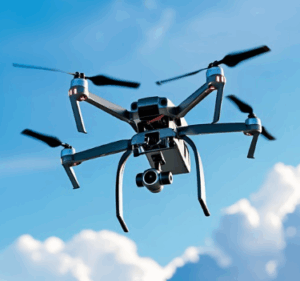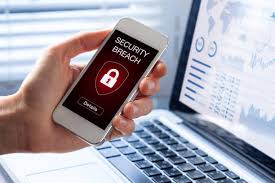How Security Has Changed Over the Past Decade: The Evolution of Modern Protection: Introduction into the Security Revolution.
Over the last ten years, the concept of security has undergone a massive transformation. From the tools we use to the threats we face, the security industry has evolved to meet the demands of an increasingly complex and unpredictable world. Whether it’s in physical spaces like office buildings and schools or digital landscapes like cloud servers and networks, security today looks very different from what it did a decade ago.
In this post, we explore how security has changed over the past decade, the key drivers behind this shift, and what it means for businesses, individuals, and communities moving forward.
1. From Guards and Gates to Smart Technology
Ten years ago, traditional security methods like on-site guards, locked doors, and static surveillance cameras were the standard. While still essential today, these basics have been enhanced with smart security systems that are far more advanced.
-
AI-powered cameras can now detect motion, faces, and even read license plates in real time.
-
Access control systems have evolved from simple keycards to biometric scanners and mobile app-based entry.

-
Drones are being used for perimeter patrols, especially in large-scale areas like construction sites or stadiums.
The shift toward technology-integrated security means faster responses, better data collection, and improved threat detection.
Keyword Tip: smart security systems, biometric access, AI in security
2. Rise of Cybersecurity as a Top Priority
In the early 2010s, cybersecurity was mainly a concern for IT departments. Today, it’s a boardroom-level issue for companies of all sizes. As businesses became more digitized and reliant on the cloud, cyber threats evolved in both frequency and sophistication.
Key developments:
-
Ransomware attacks have increased by over 300% in the past 5 years.
-
Phishing scams are now highly targeted and realistic.
-
Zero-day vulnerabilities and AI-generated cyber threats are on the rise.
Modern security must include both physical protection and cyber defense, integrating firewalls, encryption, employee training, and regular penetration testing.
Keyword Tip: cyber threats 2025, data protection, digital security evolution
3. Security Is Now Customer-Centric
In the past, security was something that “happened in the background.” Today, visible, responsive, and respectful security is a major selling point for businesses. Shoppers feel safer in well-guarded malls. Hotel guests prefer properties with 24/7 patrols. Tenants value secure entry and on-site personnel.
Security companies have also adapted:
-
Trained officers now double as customer service representatives.
-
Security staff are expected to be friendly, professional, and approachable.
-
There’s a growing emphasis on de-escalation training and non-violent conflict resolution.
This trend shows that security isn’t just about protection anymore—it’s about creating peace of mind.
Keyword Tip: customer-focused security, hospitality security trends, tenant safety
4. Proactive Security Beats Reactive Response
In years past, many organizations adopted a “wait and respond” approach to security. But now, the trend is clear: proactive security is the future.
-
Use of predictive analytics allows for real-time threat detection.
-
Incident reporting apps and cloud-based systems improve communication.
-
Geofencing and motion sensors trigger alerts before a breach occurs.
Being prepared is no longer optional—it’s essential for liability, safety, and survival.
Keyword Tip: proactive security measures, real-time threat detection, risk prevention tools
5. Security is Integrated with Emergency Management
In the past decade, the world has experienced more complex emergencies: active shooters, pandemics, civil unrest, and extreme weather events. Security teams now work closely with emergency response units to prepare for worst-case scenarios.
Today’s security providers are expected to:
-
Run active shooter drills

-
Coordinate with EMS and law enforcement
-
Establish evacuation protocols
-
Manage crowd control during crises
The result? A hybrid security model where guards aren’t just watching cameras—they’re part of the crisis management team.
Keyword Tip: emergency response integration, crisis security planning, active threat preparedness
https://www.fbi.gov/how-we-can-help-you/active-shooter-safety-resources
6. Remote Monitoring and Virtual Guarding
With the advent of cloud technology and faster networks, remote guarding has become a top solution for properties of all sizes. Businesses now use:
-
Virtual patrols with real-time video feeds
-
Two-way intercom systems to interact with trespassers or guests
-
Mobile alerts and analytics-driven monitoring centers

This allows one team to monitor multiple sites, reduce costs, and respond faster.
Keyword Tip: remote security services, virtual guarding systems, remote monitoring benefits
7. Higher Standards and Certification Requirements
Today’s security officers must meet stricter standards than ever before. With public safety on the line, training programs have become more in-depth and regulated.
Modern security guard training includes:
-
Conflict resolution and verbal de-escalation
-
Mental health awareness

-
Use of force regulations
-
Legal education and liability understanding
Security firms are also undergoing more licensing checks, background screenings, and audits to maintain credibility and public trust.
Keyword Tip: professional security training, licensed guards, private security certification
8. The Role of Social Media and Public Perception
In the last ten years, social media has transformed how security incidents are reported and perceived. A single video of a guard mishandling a situation can go viral in minutes. This has raised the bar for professionalism and accountability in the security field.
Security teams must now:
-
Act with integrity at all times
-
Understand public relations risks
-
Document every interaction carefully
Companies are increasingly choosing security firms that prioritize transparency, communication, and discretion.
Keyword Tip: security and social media, public perception of safety, accountable security
9. Customized Solutions for Each Industry
A one-size-fits-all approach no longer works. Over the past decade, the best security providers have pivoted toward industry-specific solutions. Whether it’s protecting a hospital, a marina, a church, or a cannabis dispensary, the needs are different—and so is the approach.
Key examples:
-
Churches require discreet, community-friendly security
-
Marinas need perimeter patrols and waterway access control
-
Warehouses require overnight monitoring and equipment theft prevention
Keyword Tip: industry-specific security, tailored security plans, customized protection services
Conclusion: How Security Has Changed Over the Past Decade
What the Next 10 Years Will Bring
Understanding how security has changed over the past decade gives us insight into where it’s headed. As threats become more sophisticated, so too must our responses. Technology, training, and human judgment will continue to evolve—and forward-thinking businesses must adapt accordingly.
At Hub Security and Investigative Group, we’ve spent the last decade growing with the times—investing in the tools, training, and talent needed to stay ahead of modern risks. If you’re looking for a reliable, proactive, and professional security partner in Massachusetts, we’re ready to help.
LINKS:
https://hubsecurityandinvestigativegroup.com/about-us/
https://www.fbi.gov/how-we-can-help-you/active-shooter-safety-resources
